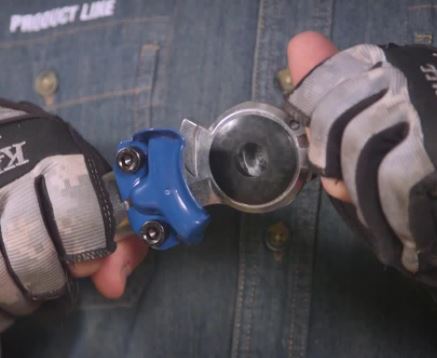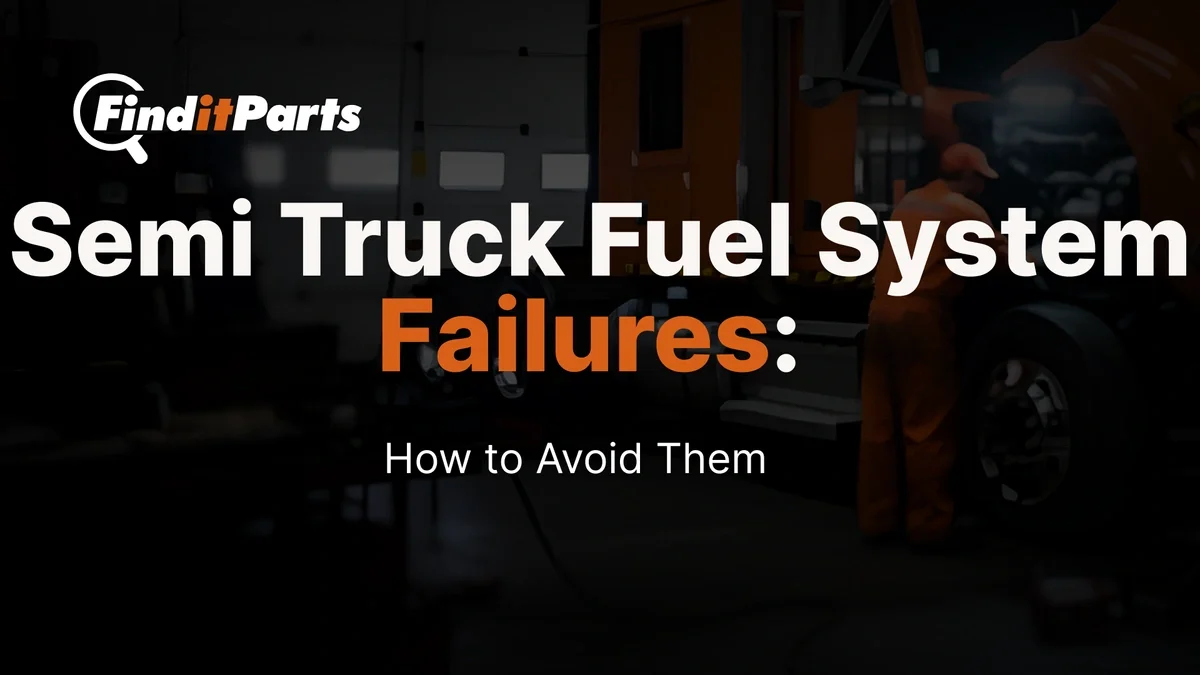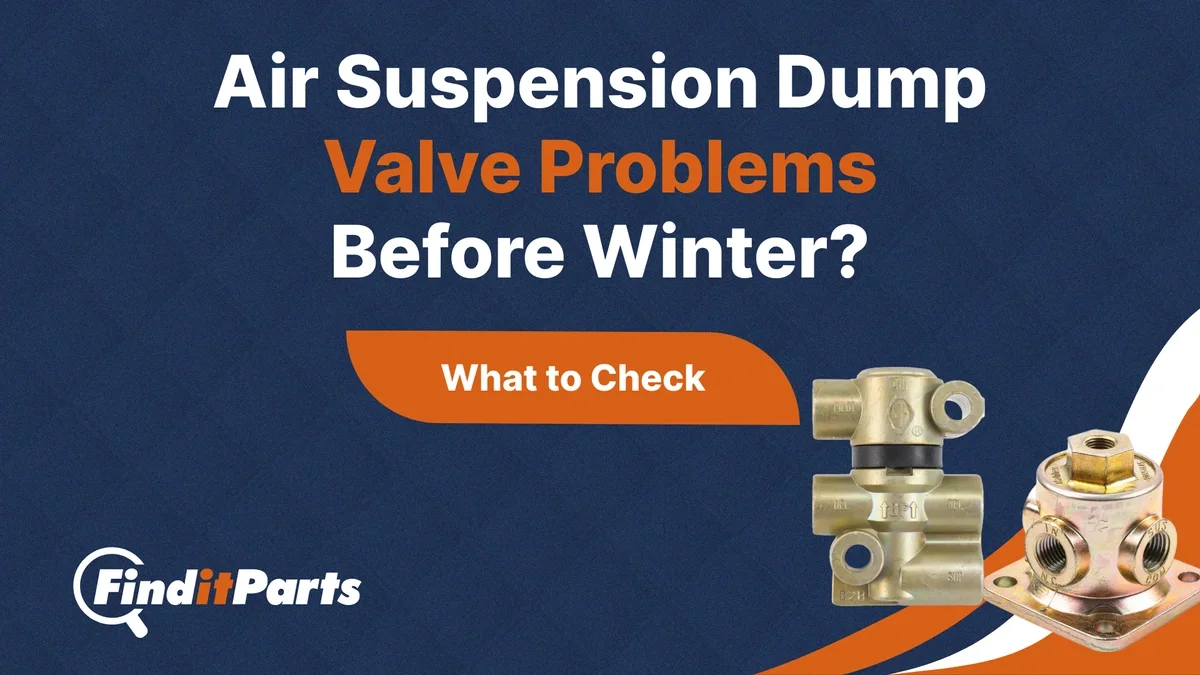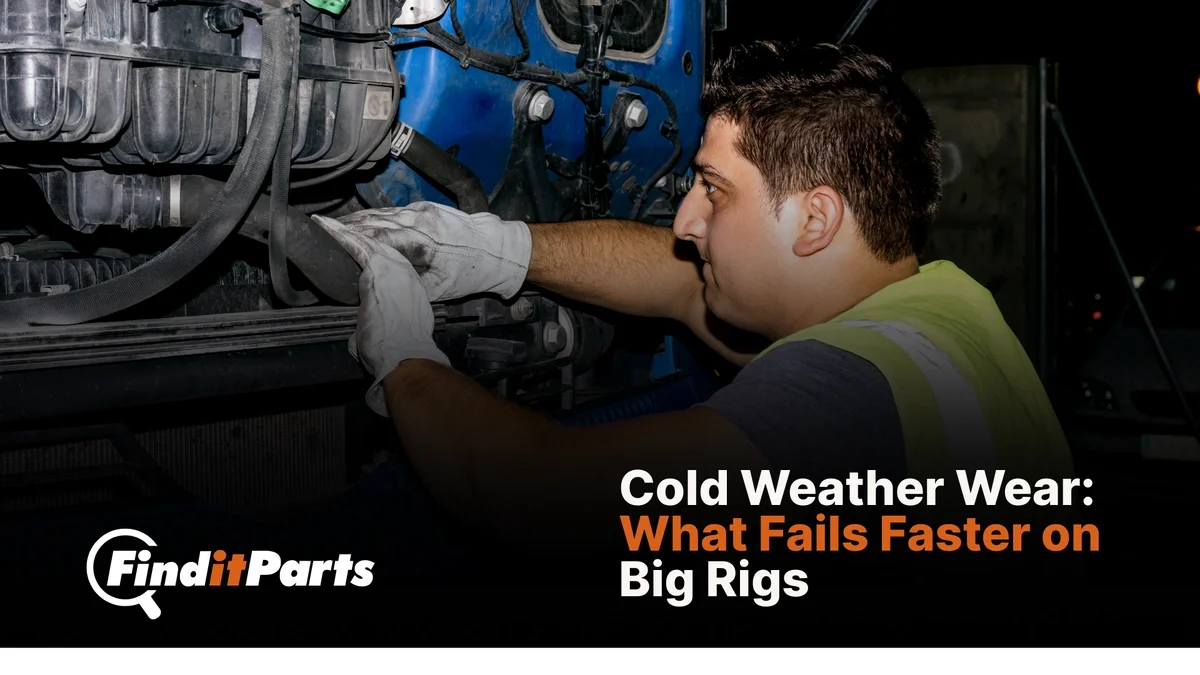Need help? We're here!
(888) 312-8812 Login SignupA Beginner’s Guide to Replacing Gladhand Seals
February 11, 2021

It's now hard to find a truck or semi without a set of gladhands. An essential part of heavy duty air brake systems, gladhand couplers connect the air service and supply lines between the truck and the trailer—key components in understanding how air brakes work. These couplers maintain the air pressure along the brake lines through special seals that resemble O-rings at the end of each gladhand. Newer gladhand seals also come with metal screens that keep dirt and other contaminants from entering and potentially damaging the brake lines.
Because they are coupled and uncoupled on a regular basis, gladhand seals tend to wear out over time. Improper coupling or exposure to extreme temperatures may also shorten the life of the seals, causing them to leak. When this occurs, the gladhand seals must be replaced as soon as possible to prevent problems with the air brake system.
Understanding why brake system maintenance is important can also help drivers appreciate how critical proper gladhand care is to overall braking performance and safety.
In this guide, we're going to break down the basics of checking and replacing the truck gladhand seals.
When to Replace Gladhand Seals
As a rule of thumb, gladhands should be replaced every year or whenever the air lines have been changed (whichever is earliest). However, if they already show signs of damage or wear, the seals must be replaced as soon as possible.
Here are some of the key signs that may indicate the gladhand seals need replacing:
-
Loss of brake pressure. The biggest sign of a leak in the gladhands is the loss of air brake pressure. Most modern truck air brake systems should be able to reach operating pressure in 45 seconds or less. If the brakes take more time than that, it may indicate a leak somewhere in the brake lines, including the gladhand seals.
-
Loss of braking power. If enough pressure is lost, this can result in weaker, squishier brakes. This will also force the driver to put more effort into the brake pedal just to make the wheels slow down.
-
A loud hiss or noise whenever the parking or service brake is applied. This indicates pressurized air is leaking out from the gladhand seal or somewhere along the brake lines.
If you start noticing these signs, it’s best to do a quick inspection. Sometimes, a leak isn’t caused by the seal at all but by other factors tied to common brake problems in heavy-duty trucks.
Types of Gladhand Seals
Gladhand seals have essentially retained the same design over the years, but they do vary in different ways:
· Material: Gladhand seals are typically made of either one of two materials: rubber or polyurethane. Rubber gladhand seals, which are made of synthetic nitrile or neoprene rubber, are the most common and low-cost. They are also resistant to petroleum oils, propane, kerosene, diesel fuel, and most solvents. However, they also tend to become brittle and crack over time. On the other hand, polyurethane seals are resistant to chemicals and extreme temperatures and will not crack or dry out over time. These seals also tend to be more expensive than their rubber counterparts.
· Shape: Gladhand seals usually have a convex or a flat face, but this is often aesthetic in nature and will not affect the performance of the seal. In convex gladhand seals, the mating surface is on the right side, while the flat-faced seals are on the left. As a rule of thumb, the part of the seal that mates into the gladhand surface is larger in flat-faced seals, but it's smaller in the convex ones.
· Color: Today most gladhand seals are color-coded: red indicates the seal is for parking brake lines while blue is for service or emergency brake lines. There are also black and silver gladhand seals meant for universal use. Make sure that you're using the appropriate seal for your truck's gladhands to prevent costly and potentially damaging mix-ups later on.
How to Replace Gladhand Seals
Gladhand seals are designed to be replaced in the field using only basic tools. So, while gladhands may look different depending on the brand, replacing their seals follow these basic steps:
· Before you begin, make sure the tractor and trailer brakes are applied and there's no pressure in the brake line.
· Disengage the gladhand from its coupling and check for any signs of damage or corrosion. If the coupler is damaged or worn out, replace it first before installing the seal.
· Using a flathead screwdriver, pry the old gladhand seal from the gladhand cavity until it pops out. Make sure not to apply too much force to avoid scraping and potentially damaging the gladhand cavity's surface. There are also special gladhand removal tools available that you can use to remove the seal faster and easier.
· Once the old seal is removed, wipe the gladhand cavity with a clean rag until it's free of oil or debris. This is especially important for severely deteriorated gladhand seals, as these tend to break apart into tiny pieces and potentially prevent the seals from being seated properly.
· Position half of the seal in the gladhand's air hole so that it is aligned squarely with the hole. Press inward around the seal's surface until its grooves lock into the grooves of the gladhand.
· Rotate the seal several times inside the gladhand cavity to make sure it's seated properly. Tight tolerances may prevent the seal from aligning properly, resulting in an improper fit. Any remaining debris inside the cavity that you may have missed out on may also lead to an improper realignment of the seal. Once the seal is properly seated, reattach the couple and turn the pressure on to check for leaks.
If you’re new to maintaining your brakes, understanding how semi-truck brake systems work can help you see how gladhands, chambers, valves, and lines all function together to keep your truck safely under control.
Additional tips:
· Make sure the gladhands and lines are properly secured. Loose gladhands can bounce wildly while traveling, potentially damaging the seals, couplers, and other components.
· Store the gladhands to their respective stowaways when dropping the trailer. Leaving the gladhands out in the open leaves the air brake system exposed to dirt and moisture. Cold weather can also lead to the seals and brake lines freezing up.
· Keep an installation manual along with your spare gladhand seals, particularly if more than one person is operating the truck. Don't assume that the driver knows how to replace the seals while out on the road.
· Consider switching to anodized gladhands. Anodized steel is treated for corrosion.
If replacing the seal doesn’t fix the issue, there could be a deeper problem within the air brake system. It might be time to look into replacing the air brake chamber or inspecting related components for wear or leaks.
Find it at FinditParts: With our vast number of sources and enhanced visibility into the inventory of distributors and manufacturers of OEM and aftermarket brands, you’re only a few clicks away from the parts you need. Need help? Our focus on service and support provides you with a repository of valuable information, customer facing technology including advanced cross reference capabilities, and technical specialists who assist in identifying and finding parts.
Related Reading:
How Air Brakes Work
https://www.finditparts.com/blog/how-air-brakes-work
Finding The Right Part Is As Easy As PIES
https://www.finditparts.com/blog/finding-the-right-part-is-as-easy-as-pies
The Evolution and Future of E-Commerce and Parts Purchasing
https://www.finditparts.com/blog/the-evolution-and-future-of-e-commerce-and-parts-purchasing



